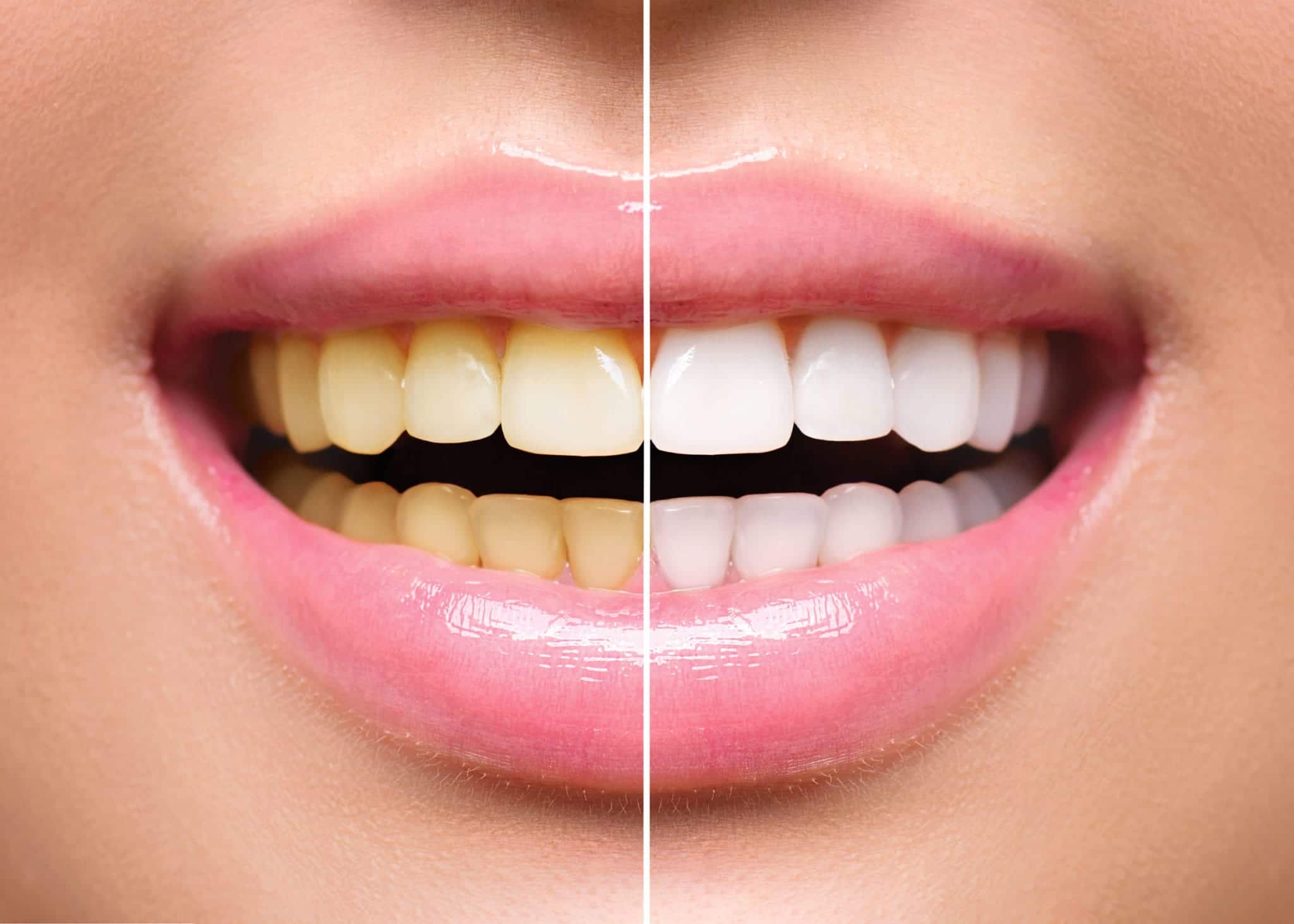
Tooth discoloration can be unsightly and distressing to many patients. Most teeth stains are a cosmetic concern, but some can also be a sign of underlying oral health problems.
Let’s take a look at why tooth discoloration happens, what different types of teeth stains signal, and most importantly, what you can do about it.
Types of Teeth Stains
Tooth discoloration can be caused by surface stains or changes in tooth composition.
There are three main types of teeth stains:
Extrinsic discoloration: This occurs when the enamel on the outer layer of the tooth is stained by food, beverages, or smoking.
Intrinsic discoloration: This occurs when the dentin in the inner structure of the tooth darkens or develops a yellow tint. This is caused by childhood tetracycline use or overexposure to fluoride.
Age-related discoloration: Many people develop tooth discoloration with age. This is usually caused by a combination of extrinsic discoloration and natural darkening of dentin with age.
Common Teeth Stain Colors
Tooth discoloration can range from yellow to green, orange, blue-gray and even black. Different colors of teeth stains tend to have different causes:
- Yellow-brown or dark-brown: This is usually due to extrinsic staining from consumption of certain beverages such as coffee, tea, wine or soda. Plaque buildup and aging can also cause stains of this color.
- Green: Some tooth stains are actually light to dark green in color. This can be caused by exposure to copper, nickel, and mercury, or even the presence of fluorescent bacteria and fungi. Certain health conditions can also cause green tooth stains.
- Orange: These stains usually appear near the gum line, and are caused by color-producing bacteria or food buildup.
- Blue-gray: These stains are intrinsic, and are caused by exposure to tetracycline during childhood.
- Black: These stains are extrinsic, and usually appear in a line on the front teeth. Iron supplements or certain mouthwashes can cause this type of stain.
Solutions for Stained Teeth
Good oral hygiene can prevent the development of teeth stains and may be able to lessen pre-existing staining over time. However, for intrinsic stains or stubborn extrinsic stains, there are treatment options available.
Common treatment options for stained teeth include:
- Teeth whitening: Most extrinsic stains can be removed by professional teeth whitening treatments. There are several types of teeth whitening, including laser or professional chemical bleaching, both performed by your dentist, and at-home kits that use hydrogen peroxide. Before you try teeth whitening, you’ll need a thorough dental exam, and problems such as tooth decay or gum disease may need to be addressed.
- Micro-abrasion: This procedure polishes away extrinsic tooth stains using a mixture of hydrochloric acid and pumice. This removes a very thin layer of tooth enamel to reveal whiter, evenly colored teeth.
- Porcelain veneers: This option covers stained teeth altogether with porcelain dental veneers. This is an excellent treatment option for intrinsic staining or other cosmetic concerns such as chipped or cracked teeth. Veneers typically take only one office visit to apply and require little to no prep work. Veneers are stain-resistant, but it is best to keep consumption of staining food and drink to a minimum if you have veneers.

Stained teeth are a common problem that can be difficult for many people to avoid, especially with age. However, there are many cosmetic dentistry options available to get rid of even the toughest stains.






